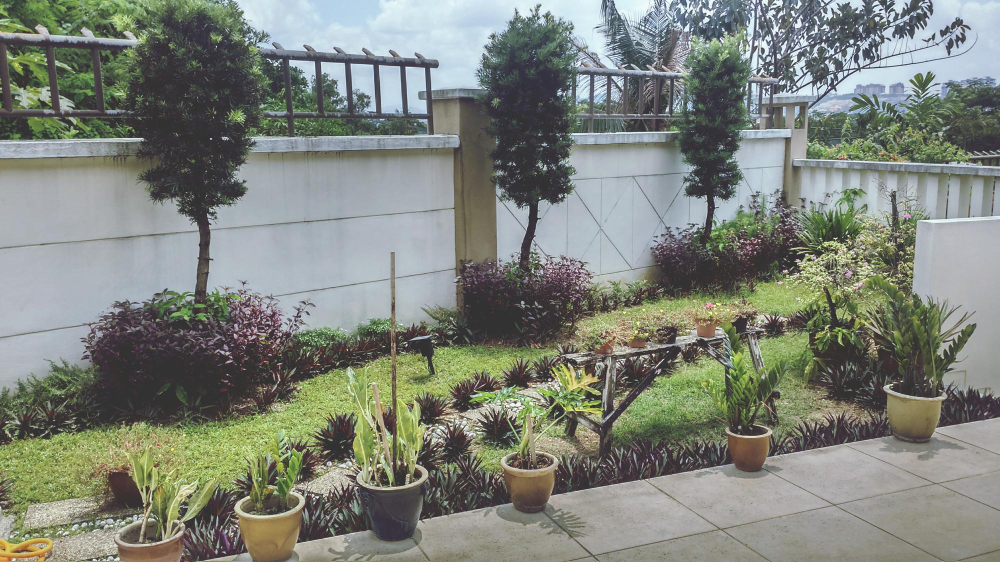Simple Eco-Friendly Landscaping Practices

If your yard and the landscape you create there is that part of your home that connects you with the outdoors and with nature, shouldn’t the yard be as natural as possible? This does not mean turning it into a jungle that is not comfortable for humans to be in. A yard can be beautiful, functional, available for different uses, and more while also being natural. Eco-friendly landscaping is the hot new trend in yards because not only does it protect the environment, it adds beauty to the landscape, and is a very cost-effective way to create a yard that people want to spend time in. Creating an eco-friendly landscape is not difficult.
Starting the Eco-Friendly Process
1. Plant a variety of seasonal blooms. This will ensure that there are always blooming plants – with plants flowering throughout the year, pollinators will always be attracted to the yard so that pollination is happening in all seasons. This will enable year-round natural blooming.
2. Plant trees that absorb carbon dioxide, create oxygen, filter airborne pollution, and help to prevent soil erosion.
3. Avoid using pesticides and chemical fertilizers. Use natural products instead. They are as effective, are more economical, and using them is good for the environment.
4. Save water by using drought-resistant plants that require little watering. An automated irrigation system will allow you to control when the plants are watered and how much is used. A third way to conserve water is to collect rainwater which is better for the garden than chemically treated tap water.
5. Make your compost to provide soil nutrition and increase water retention.
6. Mulching will fight against weeds and because it reduces evaporation, will help to keep the soil moist.
7. Think of everything you use to care for the garden. What can you replace with natural products? What do you keep discarding? Can you recycle instead of throwing it away?
Also Read: Planting for Tomorrow: Building an Eco-Friendly and Future-Proof Garden
The Benefits of Native Plants in Landscaping
A major factor in eco-friendly landscaping is the use of native plants. The benefits of planting these include:
1. Because native plants thrive in their natural habitats, they need little if any, additional watering which reduces both the time and money you need to spend on them.
2. They can withstand the vagaries of the local climate and they will be equipped to survive harsh weather conditions.
3. Using native plants allows you to contribute to your natural surroundings.
4. Native plants have evolved to fight against weeds and other factors that impair the growth of non-native species that are not genetically programmed to fight these dangers.
5. Native plants are not, as a rule, invasive. This means that they will not take over your yard and crowd out the other plants and shrubs.
These are just a few starting points to consider. A landscaping professional will be able to help you to create an eco-friendly landscape that will because it is natural and good for the environment, make the yard an even more attractive place in which to spend time.
Frequently Asked Questions
1. What is eco-friendly landscaping?
Eco-friendly landscaping focuses on using natural, sustainable practices to create beautiful, functional yards that benefit both the environment and homeowners.
2. How can I save water in my yard?
You can save water by planting drought-resistant plants, using an automated irrigation system, and collecting rainwater for your garden.
3. Why should I use native plants in my landscaping?
Native plants require less water, are better suited to local climates, and help protect the environment by resisting weeds and reducing the need for chemical treatments.
4. How can I reduce the use of chemicals in my garden?
You can avoid pesticides and chemical fertilizers by using natural products like compost, mulch, and organic pest control solutions.
5. What are the benefits of making my own compost?
Composting helps provide natural nutrition to your soil, increases water retention, and reduces waste by recycling organic material.
- Oct 18, 2024
